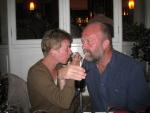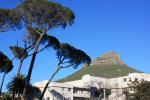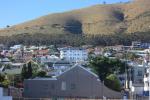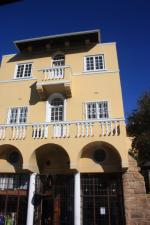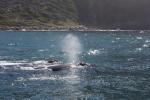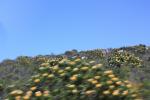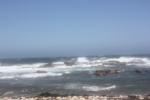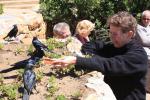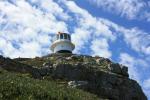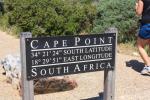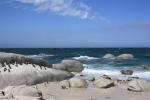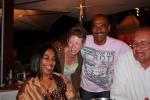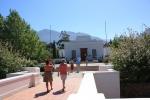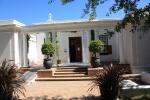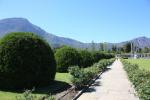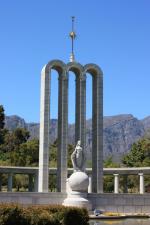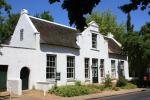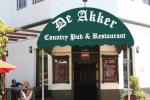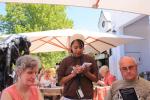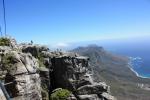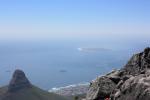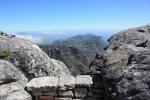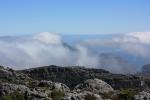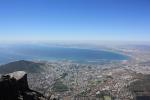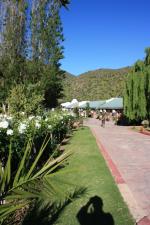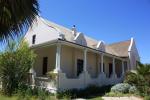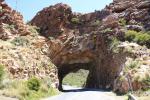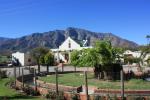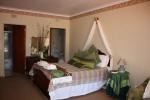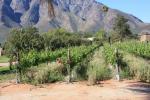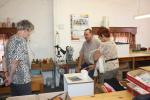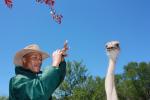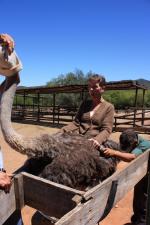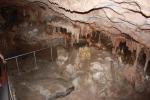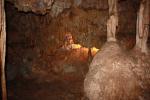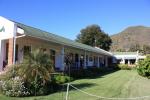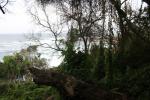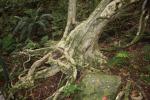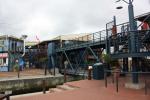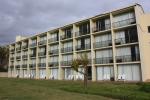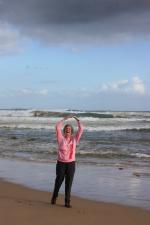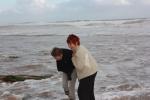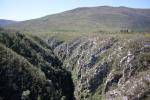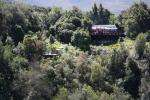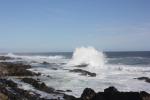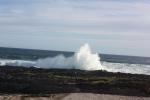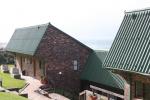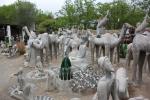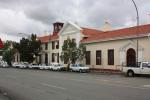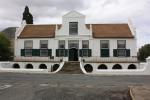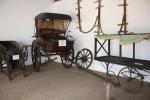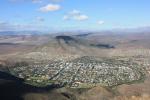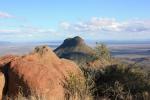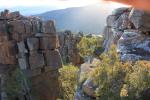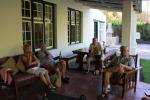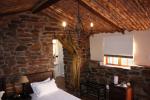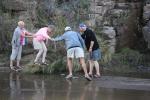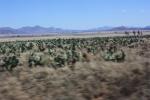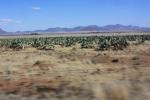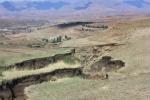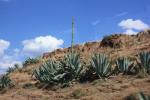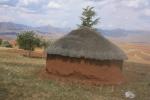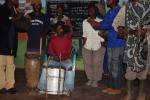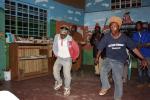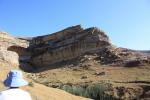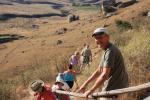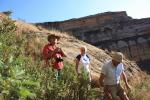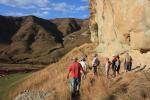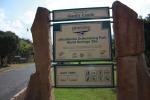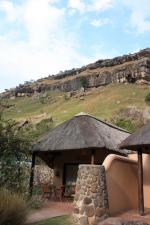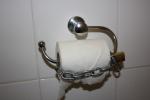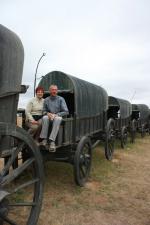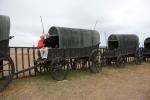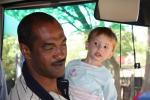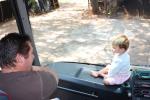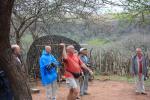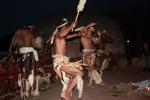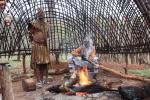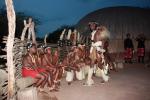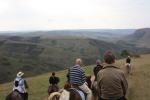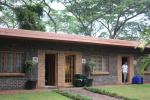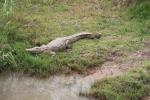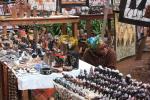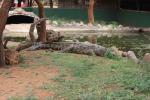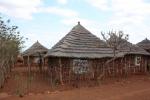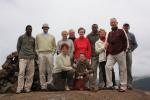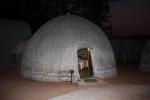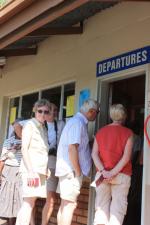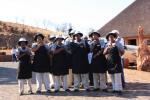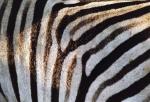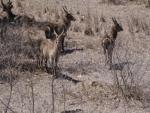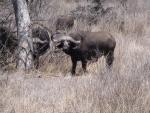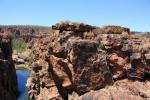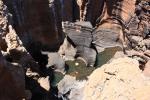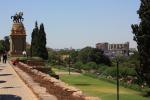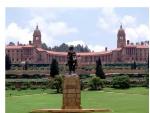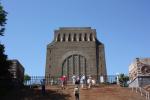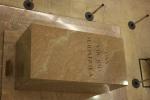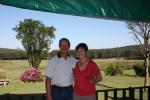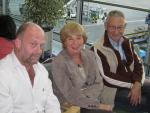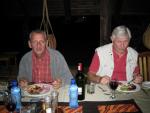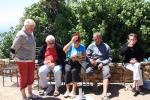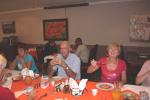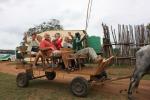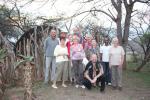Lilliesleaf
The ANCs armed wing Umkhonto we Sizwe (MK), began operating in 1961. Under the leadership of Nelson Mandela, MK followed a policy of targeting state buildings for sabotage without taking lives. In the first 18 months MK carried out about 200 acts of sabotage, and despite the policy, some deaths did occur. MK headquarters were at the farm Lilliesleaf in Rivonia just outside Johannesburg.

Nelson Mandela in the 1950s
Mandela started making plans for MK members to receive training outside of South Africa and managed to slip past the authorities as he moved in and out of South Africa. This earned him the name 'the Black Pimpernel. Mandela also initially managed to resist arrest inside South Africa. But in August 1962, after a tip off, the police set up a roadblock and captured Mandela. After this the success of MK declined and the police managed to infiltrate the organisation. Through information leaked by informer Gerard Ludi the police learned of where the MK headquarters were. In July 1963 the police raided Lilliesleaf farm and arrested many prominent leaders of the ANC and MK including Walter Sisulu, Govan Mbeki and Ahmed Kathrada. At the same time the police gathered evidence to be used in the trial against these men. The evidence also enabled the police to arrest other people such as Denis Goldberg. Particularly damaging was the information on Operation Mayibuye (Operation Comeback), a plan for bringing back the exiles into the country and revealing that MK was planning to use guerrilla warfare.

The house at Lilliesleaf, where the MK headquarters was.
(Photograph: Official police file photos / Wits Historical Papers)
The Rivonia Trial

Crowds outside the court at the Rivonia Trial
(Source: Bailey African History Archives)
In October 1963 the Rivonia Trial began. Ten people were accused of treason, trying to overthrow the government and sabotage. Mandela was tried together with those arrested at Lilliesleaf and another 24 co-conspirators were also listed. Many of these people had already managed to leave the country, including Oliver Tambo. The ANC used the case to attract international attention to their cause. During the hearing, Mandela gave his famous I am prepared to die speech. In June 1964 eight of those being tried were found guilty of sabotage, planning and executing guerrilla warfare, and working towards an armed invasion of the country. The charge of treason was dropped. They were all sentenced to life imprisonment. They did not get the death penalty, as this risked too much international condemnation of the government. Goldberg was sent to Pretoria prison and the others were all sent to Robben Island. Bram Fischer, the defence lawyer, was himself arrested and tried shortly afterwards.

The gates of the jail on Robben Island
The Impact Of The Trial
By imprisoning leaders of MK and the ANC, the government was able to break the strength of the ANC inside South Africa. At the same time this increased international criticism of apartheid. The United Nations condemned the trial and initiated steps to introduce sanctions. Over the next few years there were few acts of sabotage while the ANC worked on how they could infiltrate South Africa in the absence of an internal structure. The governments attempt to crush all resistance was effective for the time being. At the end of the 1960s, new organisations and ideas would form to challenge apartheid, and in 1976 the worlds attention would be drawn to South Africa again with the June 16 uprising in Soweto.



